Montreal’s reputation as the ‘Sin City of the North’ didn’t come out of nowhere. During the early to mid-20th century, the city’s thriving criminal underworld fueled its notoriety. Prohibition had a major impact, spurring the growth of organized crime and the proliferation of illicit businesses – from drug trafficking to gambling operations and a burgeoning sex work industry. The entertainment district became a hub for these clandestine activities, drawing visitors from across North America and cementing Montreal’s infamous status. But what exactly happened in this notorious Red Light era, and how did it transform the city? Dig deeper to uncover the gritty details.
Key Points
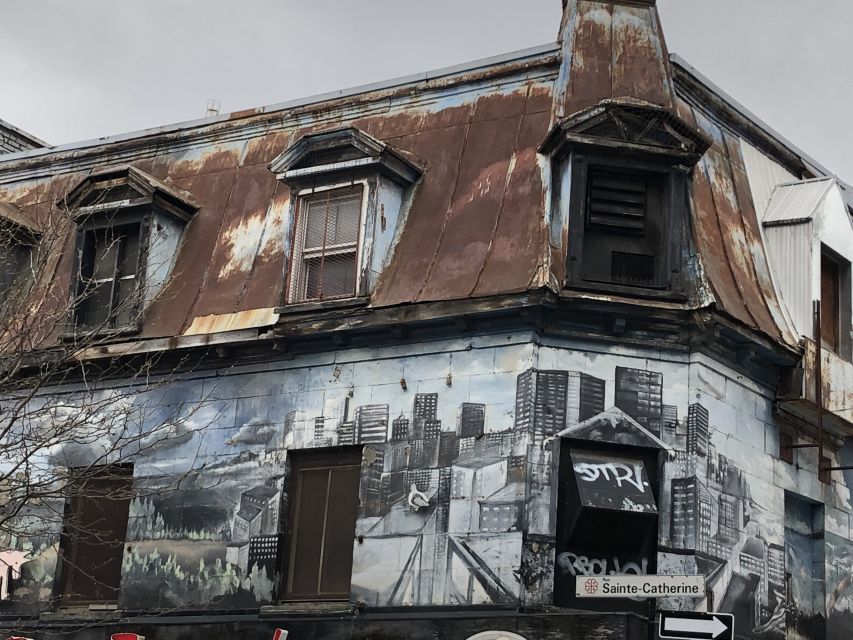
- Montreal’s reputation as the ‘Sin City of the North’ arose from its thriving criminal underworld and illicit activities during the early to mid-20th century.
- Prohibition in Canada fueled the growth of organized crime in Montreal, leading to the proliferation of underground businesses like the drug trade, gambling, and sex work.
- The Red Light District became a hub for these clandestine activities, attracting visitors from across North America and earning the city its notorious reputation.
- Widespread corruption allowed the sex trade and other criminal enterprises to flourish, as officials were often bribed to turn a blind eye to the district’s excesses.
- The entertainment landscape of the Red Light District underwent a transformation, with former cabarets and dance halls evolving into more mainstream venues.
Reputation as Sin City

Montreal’s reputation as the ‘Sin City of the North’ or the ‘Paris of North America‘ arose from the city’s thriving criminal underworld and notoriety for illicit activities during the early to mid-20th century.
The impact of prohibition on the Canadian economy fueled the growth of organized crime and the proliferation of underground businesses, including the drug trade, gambling operations, and a burgeoning sex work industry.
Montreal’s entertainment district became a hub for these clandestine activities, attracting visitors from across North America who sought to indulge in the city’s seedy underbelly.
This reputation for vice and debauchery cemented Montreal’s status as a center of vice and criminality during a tumultuous era in its history.
You can also read our reviews of more tours and experiences in Montreal.
Prohibition’s Impact on Underworld
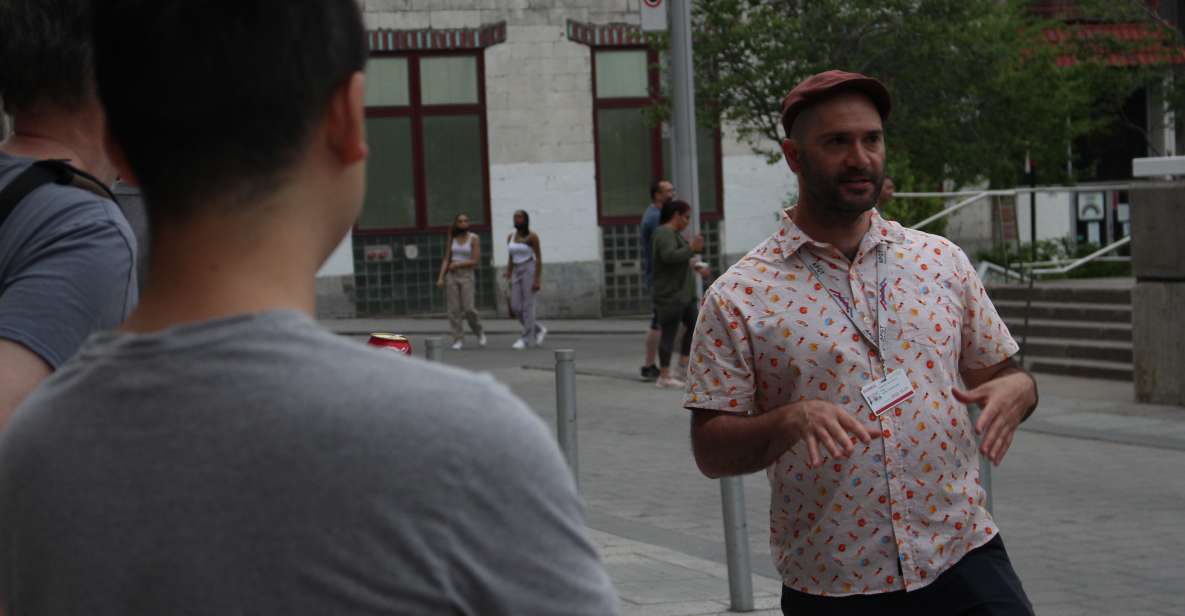
The impact of prohibition on the Canadian economy fueled the growth of organized crime in Montreal, leading to the proliferation of illicit businesses like the drug trade, gambling operations, and a burgeoning sex work industry. The city’s criminal underworld thrived, with gangs and syndicates competing for control of these lucrative markets. Corruption became rampant, as law enforcement and political officials were often bribed to turn a blind eye to the illegal activities. This transformed the entertainment district into a hub of vice and debauchery, earning Montreal its notorious reputation as the "Sin City of the North."
| Illicit Activities | Corruption |
|---|---|
| Drug Trade | Bribery |
| Gambling | Extortion |
| Sex Work | Collusion |
| Prostitution | Racketeering |
| Bootlegging | Graft |
Criminality and Sex Work
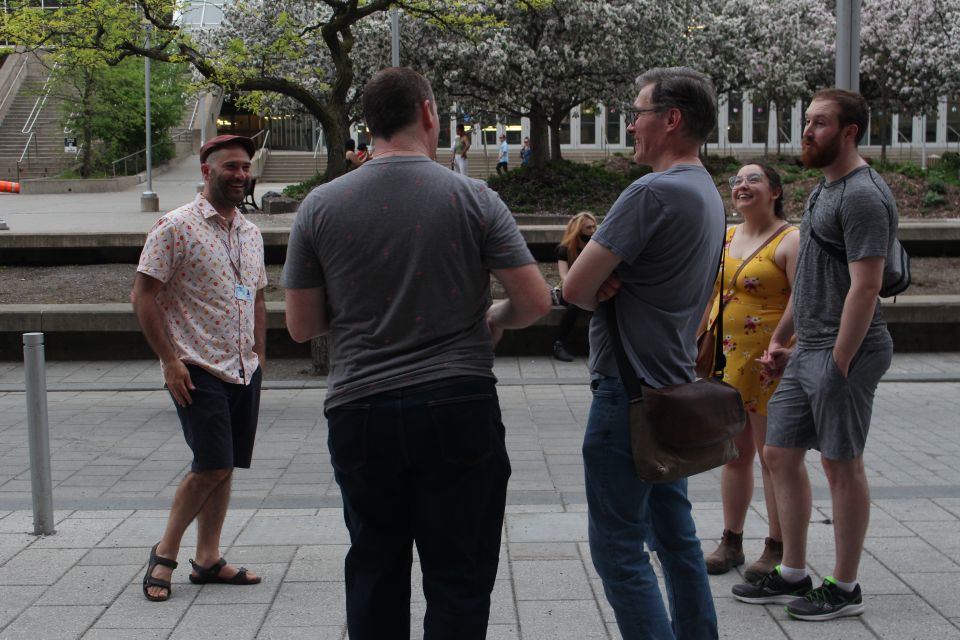
Rampant drug trafficking, illicit gambling operations, and a thriving sex work industry characterized the criminal underworld of Montreal’s notorious Red Light District during its heyday.
Brothels, cabarets, and clubs operated with impunity, despite the efforts of so-called ‘morality squads’ to curb the district’s excesses. The area’s reputation for vice attracted visitors from near and far, fueling a thriving criminal economy.
The district was home to a lucrative drug trade, with narcotics smuggled in from abroad.
Illegal gambling dens and casinos offered high-stakes games of chance for the city’s elite.
Sex work flourished in the district’s numerous brothels, with prostitutes catering to a wide range of clientele.
Corruption and collusion between criminal elements and law enforcement allowed this underworld to thrive, transforming the entertainment district into a hub of vice and debauchery.
Morality Squads and Corruption
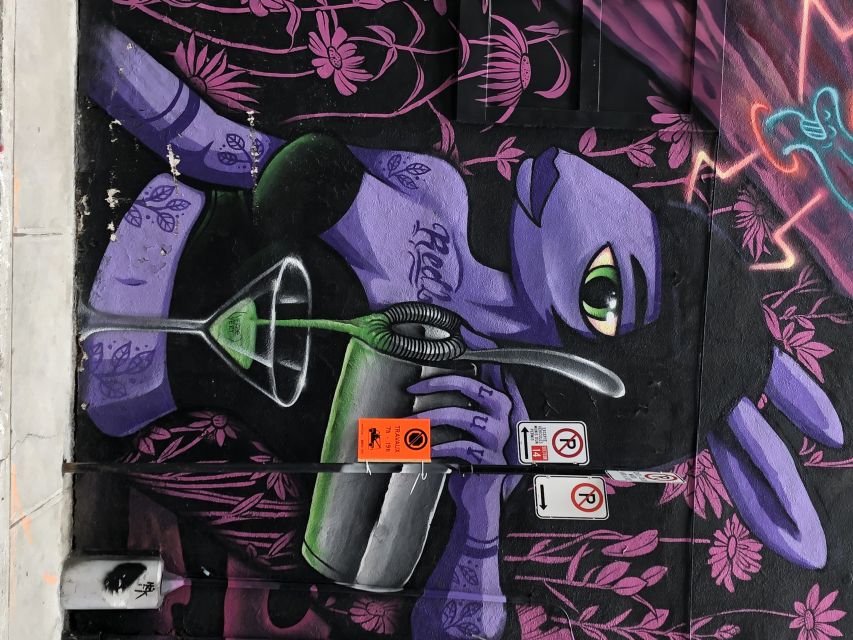
Despite the city’s efforts to curb the excesses of the Red Light District through so-called ‘morality squads‘, widespread corruption often thwarted their attempts to enforce the law.
Morality squads, composed of police officers and social workers, conducted raids on brothels and other establishments, but they were frequently hindered by payoffs and political influence.
Brothel owners and pimps bribed officials to ignore their illicit activities, while law enforcement officers supplemented their meager salaries by accepting bribes.
This pervasive corruption allowed the sex trade and other criminal enterprises to flourish in Montreal’s Red Light District throughout the 1920s, 1930s, and 1940s, despite the efforts of the morality squads.
More Great Tours NearbyTransformation of Entertainment District
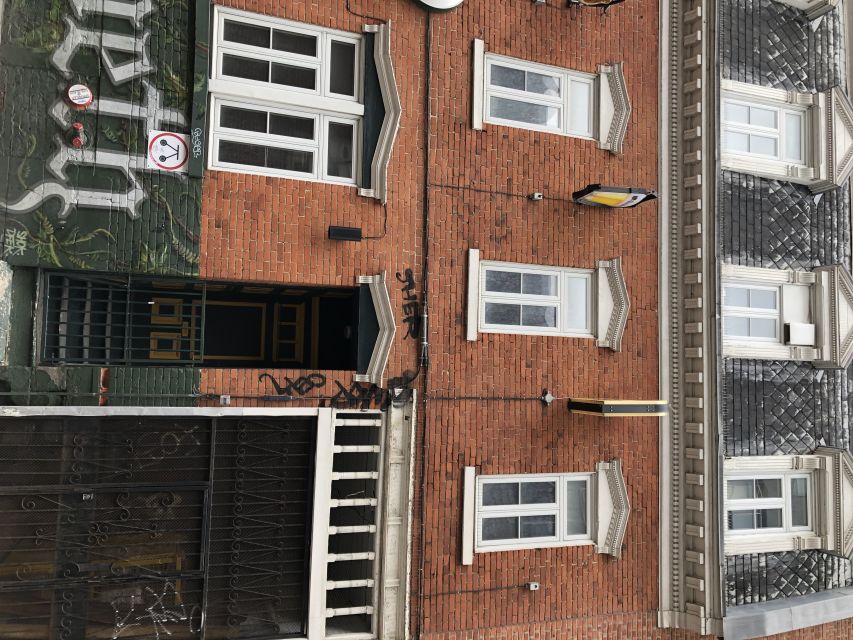
As the Red Light District’s infamy grew, the entertainment landscape of Montreal underwent a remarkable transformation. Cabarets and dance halls that had once catered to the desires of the district’s patrons began to evolve, shifting their focus towards more mainstream audiences and attractions.
This transition signaled a gradual shift in the public’s perception of the area, as it sought to shed its scandalous reputation and reposition itself as a hub of respectable entertainment.
Notable changes included:
- The transformation of the Théâtre du Nouveau Monde from a former cabaret into a prestigious performing arts venue.
- The rebranding of the Café Cléopâtre as a family-friendly restaurant and entertainment complex.
- The closure of the notorious Bordel Comedy Club, symbolizing the district’s move away from its seedy past.
Key Locations in the District
Within the confines of Montreal’s notorious Red Light District, several landmark establishments stood as symbols of the area’s seedy underbelly.
The Bordel Comedy Club, known for its risqué performances and shady clientele, exemplified the district’s reputation as a hub of vice and debauchery.
In contrast, the Café Cléopâtre transitioned from its scandalous past, rebranding itself as a family-friendly entertainment complex that catered to a more mainstream audience.
Meanwhile, the Théâtre du Nouveau Monde, a former cabaret, underwent a remarkable transformation, emerging as a prestigious performing arts venue that distanced itself from the district’s sordid history.
Tour Details and Information
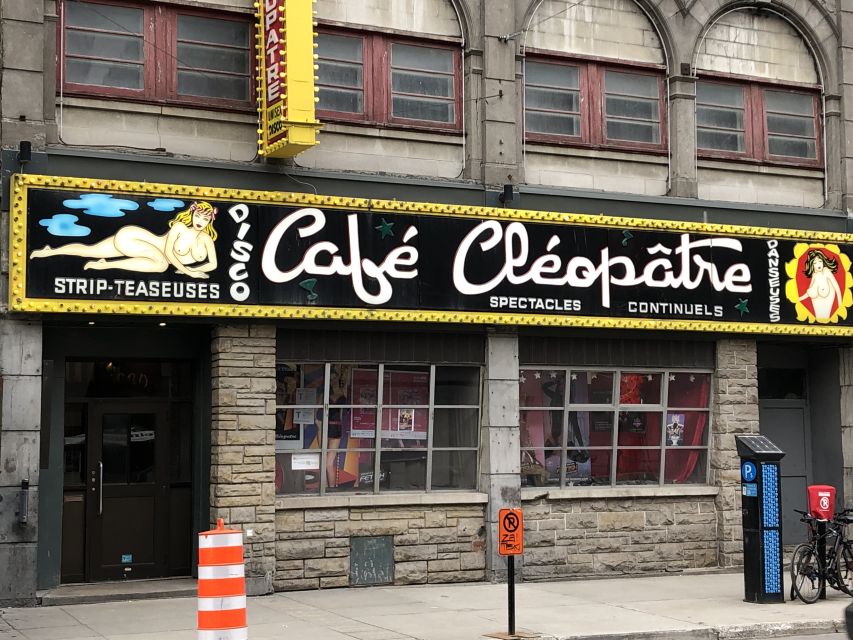
Visitors can experience a guided tour of Montreal’s notorious Red Light District, lasting approximately two hours and starting from two key locations in the area.
The tour takes guests through the heart of this once-thriving entertainment hub, providing a glimpse into the district’s storied past.
Throughout the journey, visitors will encounter:
- The Bordel Comedy Club, a former cabaret that hosted lively performances
- Café Cléopâtre, a legendary nightclub where the entertainment was anything but tame
- Le Théâtre du Nouveau Monde, a former cabaret now transformed into a prestigious theater
This immersive experience isn’t suitable for those under 16, but offers a unique opportunity to explore Montreal’s captivating Red Light legacy.
Reservations can be made in advance, with free cancellation available up to 24 hours prior.
Historical Context and Background
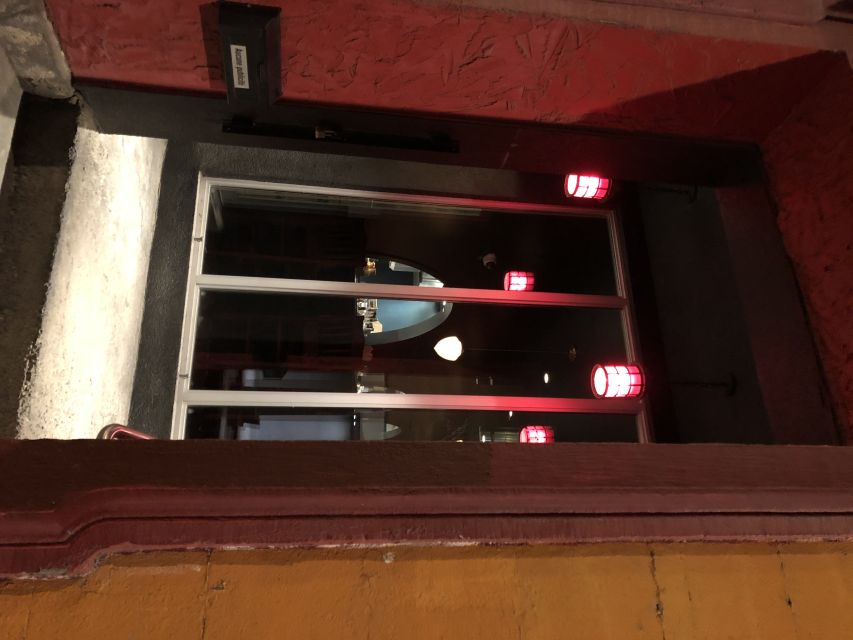
Montreal’s reputation as the ‘Sin City of the North’ or the ‘Paris of North America‘ didn’t emerge overnight. This notoriety stemmed largely from the city’s thriving criminal underworld, which flourished during the era of prohibition.
The impact of this 20th-century legislation was profound, as it drove a surge in illicit activities like the drug trade, gambling, and sex work. Brothels and cabarets became hubs of vice, while morality squads and corruption within law enforcement further complicated the picture.
Over the decades, the entertainment district transformed, with iconic venues like the Bordel Comedy Club and Café Cléopâtre emerging as symbols of Montreal’s reputation as a haven for those seeking to indulge in the more scandalous side of life.
Frequently Asked Questions
What Types of Entertainment Were Available in the Red Light District?
The Red Light District offered a variety of entertainment, including cabaret-style performances, comedy clubs, and brothels. Visitors could indulge in drinking, gambling, and sexual services in this notorious area of Montreal during the early-to-mid 20th century.
Were There Any Famous or Notorious Figures Associated With the District?
The Red Light District was home to many notorious figures, including mobsters, brothel owners, and sex workers. Prominent criminal figures like Raoul Dufresne and Rosario Fontaine ran lucrative operations in the area’s nightclubs and brothels during the district’s heyday.
How Did the Red Light District Compare to Similar Districts in Other Cities?
The Red Light District of Montreal was known for its vibrant entertainment scene, though it wasn’t unique – similar districts existed in other major North American cities like New York and Chicago during the same era. However, Montreal’s district stood out for its size and notoriety.
What Were Some of the Common Social Problems or Issues Related to the District?
The Red Light District grappled with prevalent social issues like corruption, organized crime, and the exploitation of sex workers. Drug trade, gambling, and brothel activities thrived, despite efforts by morality squads to curb the district’s illicit activities.
How Did the Red Light District Change Over Time During Its Active Period?
The Red Light District of Montreal evolved from the 1920s to the 1950s. What started as a thriving hub of vice and criminality later transformed into an entertainment district as crackdowns on morality increased.
Recap
Montreal’s reputation as the ‘Sin City of the North’ during the early to mid-20th century was a complex product of the era’s prohibition-fueled organized crime and the thriving but illicit industries it spawned.
The city’s entertainment district became a hub for these clandestine activities, ultimately transforming the area and earning Montreal its notorious reputation.
Though morality squads and corruption played a role, the district’s key locations and the historical context of the time period all contributed to this pivotal chapter in the city’s history.
You can check availability for your dates here:More Tour Reviews in Montreal
- Private Day Tour to Wildlife Parc Omega and Montebello Lodge From Montreal
- Private Walking Tour: Old Montreal and Underground City
- Quebec City & Ice Hotel VIP Day Trip
- Irish Famine in Montreal Walking Tour
- Paranormal Investigation Ghost Tour in Montreal
- Montréals Mile End to Outremont: A Self-Guided Audio Tour
Not for you? Here's more nearby things to do in Montreal we have reviewed
- 25 Best Guided Tours In Montreal
- 25 Best Tours In Montreal
- 2 Best National Park Tours In Montreal
- 6 Best Shopping Tours In Montreal
- 4 Best Drinking Tours In Montreal
- Private Day Tour to Wildlife Parc Omega and Montebello Lodge From Montreal
- Private Walking Tour: Old Montreal and Underground City
- Quebec City & Ice Hotel VIP Day Trip
- Irish Famine in Montreal Walking Tour
- Paranormal Investigation Ghost Tour in Montreal
- Montréals Mile End to Outremont: A Self-Guided Audio Tour
- Ultimate Chocolate Tour in Montreal With Included Tastings
